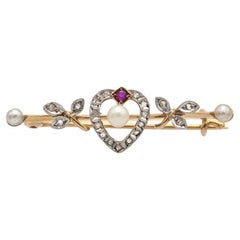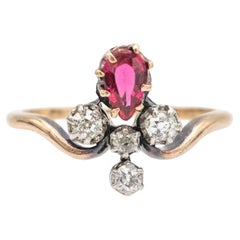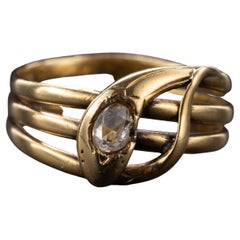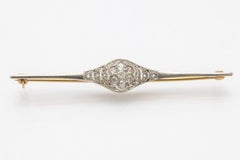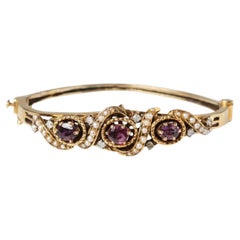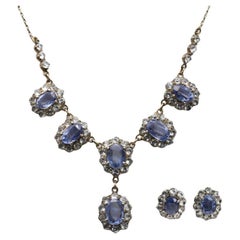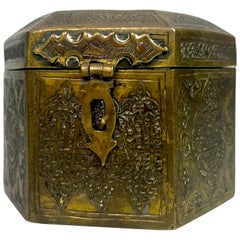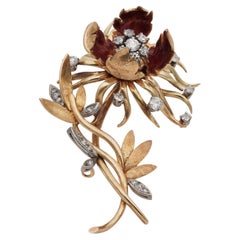Old Antique Jewellery
1920s French Old Antique Jewellery
Diamond, Pearl, Gold, 18k Gold
Early 20th Century Unknown Old Antique Jewellery
Diamond, Gold, 18k Gold
Late 19th Century Victorian Old Antique Jewellery
Diamond, 18k Gold
Early 20th Century Unknown Art Deco Old Antique Jewellery
Diamond, Gold, 14k Gold, White Gold, Yellow Gold
1890s Old Antique Jewellery
Pearl, Freshwater Pearl, Gold, Yellow Gold
Early 20th Century Unknown Art Nouveau Old Antique Jewellery
Pearl, Diamond, Natural Pearl, Ruby, Gold, 14k Gold
Early 20th Century Unknown Old Antique Jewellery
Sapphire, 10k Gold, Silver
Early 20th Century Syrian Art Deco Old Antique Jewellery
Brass
1840s Italian Retro Old Antique Jewellery
Diamond, 18k Gold
Early 20th Century Old Antique Jewellery
Diamond, 18k Gold, Platinum
1920s Art Deco Old Antique Jewellery
Diamond, Pearl, Sapphire, Platinum
Early 1900s French Belle Époque Old Antique Jewellery
Diamond, White Diamond, Gold, 18k Gold, Yellow Gold, White Gold
Early 20th Century British Edwardian Old Antique Jewellery
Pearl, Peridot, Gold, 9k Gold
1920s Swedish Retro Old Antique Jewellery
Diamond, Sapphire, 18k Gold
1920s Austrian Art Deco Old Antique Jewellery
Diamond, 14k Gold
1920s Swedish Art Deco Old Antique Jewellery
Diamond, Yellow Sapphire, 18k Gold
19th Century European Art Nouveau Old Antique Jewellery
Diamond, 18k Gold, Silver, 10k Gold
Late 19th Century European Arts and Crafts Old Antique Jewellery
Quartz, 14k Gold
Early 1900s Georgian Art Nouveau Old Antique Jewellery
14k Gold
Early 1900s Italian Art Nouveau Old Antique Jewellery
Diamond, Pearl, Gold-filled, Silver
1920s European Art Deco Old Antique Jewellery
Diamond, 14k Gold, Silver
1920s American Art Deco Old Antique Jewellery
Diamond, Pearl, 18k Gold, Platinum
1920s Italian Empire Old Antique Jewellery
Diamond, 18k Gold, Enamel, Platinum
Early 1900s Swedish Renaissance Revival Old Antique Jewellery
Diamond, 18k Gold, Silver
1910s British Art Deco Old Antique Jewellery
Silver
1910s European Baroque Revival Old Antique Jewellery
Carnelian, 18k Gold, Yellow Gold, Platinum
Mid-18th Century European Renaissance Revival Old Antique Jewellery
Diamond, Ruby, 10k Gold, Silver
1920s European Art Deco Old Antique Jewellery
Diamond, 14k Gold
1850s European Early Victorian Old Antique Jewellery
Diamond, Aquamarine, 14k Gold, Silver
1910s Russian Art Nouveau Old Antique Jewellery
Garnet, Ruby, 14k Gold
1920s Swedish Art Nouveau Old Antique Jewellery
18k Gold
1870s Swedish Arts and Crafts Old Antique Jewellery
18k Gold
Late 19th Century Russian Russian Empire Old Antique Jewellery
18k Gold
1890s French Arts and Crafts Old Antique Jewellery
Tourmaline, 14k Gold
Late 19th Century Russian Russian Empire Old Antique Jewellery
14k Gold, Enamel
1920s Swedish Art Deco Old Antique Jewellery
Diamond, Sapphire, 18k Gold
Early 1900s Russian Art Nouveau Old Antique Jewellery
14k Gold
1910s Swedish Art Nouveau Old Antique Jewellery
Diamond, 18k Gold
1920s European Art Nouveau Old Antique Jewellery
Coral, 18k Gold
1910s Swedish Art Deco Old Antique Jewellery
Blue Sapphire, 18k Gold
1910s Swedish Art Nouveau Old Antique Jewellery
Emerald, 18k Gold
1920s Danish Art Nouveau Old Antique Jewellery
18k Gold
1910s German Art Deco Old Antique Jewellery
Diamond, 14k Gold
1920s Swedish Art Deco Old Antique Jewellery
Diamond, Sapphire, 18k Gold
Late 19th Century Austrian Art Nouveau Old Antique Jewellery
Garnet, Silver
1890s Swedish Arts and Crafts Old Antique Jewellery
18k Gold
1920s Swedish Art Nouveau Old Antique Jewellery
22k Gold
1920s Danish Greek Revival Old Antique Jewellery
Enamel, 14k Gold
1920s Greek Greek Revival Old Antique Jewellery
Pearl, Enamel, 18k Gold
1920s German Art Deco Old Antique Jewellery
Diamond, Sapphire, 18k Gold, Platinum
Early 1900s Austrian Arts and Crafts Old Antique Jewellery
Pearl, Silver, Enamel
1890s Swedish Arts and Crafts Old Antique Jewellery
Pearl, 18k Gold
1910s Swedish Art Nouveau Old Antique Jewellery
Diamond, Emerald, 18k Gold
1880s Swedish Retro Old Antique Jewellery
Diamond, Emerald, 18k Gold
1880s Swedish Arts and Crafts Old Antique Jewellery
18k Gold
1910s European Art Nouveau Old Antique Jewellery
18k Gold
Early 1900s Ukrainian Art Nouveau Old Antique Jewellery
14k Gold
Early 1900s Austrian Renaissance Revival Old Antique Jewellery
Garnet, Pearl, Turquoise, Silver, Enamel
1920s Swedish Art Deco Old Antique Jewellery
Diamond, Sapphire, 18k Gold, Silver
1920s Swedish Art Deco Old Antique Jewellery
Diamond, 18k Gold, Silver
- 1
- ...
Old Antique Jewellery For Sale on 1stDibs
How Much is an Old Antique Jewellery?
The Legacy of Diamond in Jewelry Design
Antique diamond rings, diamond tiaras and dazzling vintage diamond earrings are on the wish lists of every lover of fine jewelry. And diamonds and diamond jewelry are primarily associated with storybook engagements and red-carpet grand entrances — indeed, this ultra-cherished gemstone has a dramatic history on its hands.
From “A Diamond Is Forever” to “Diamonds Are a Girl’s Best Friend,” pop culture has ingrained in our minds that diamonds are the most desired, the most lasting and the most valuable gemstone. But what makes the diamond so special? Each stone — whether it’s rubies, sapphires or another stone — is unique and important in its own right. April babies might claim diamonds for themselves, but just about everyone wants this kind of sparkle in their lives!
There are several factors that set diamonds apart from other stones, and these points are important to our gem education.
Diamonds are minerals. They are made up of almost entirely of carbon (carbon comprises 99.95 percent; the remainder consists of various trace elements). Diamonds are the hardest gemstones, ranking number 10 on the Mohs Hardness Scale. Even its name, diamond, is rooted in the Greek adamas, or unconquerable. The only object that can scratch a diamond is another diamond. Diamonds are formed deep within the earth at very high temperatures (1,652–2,372 degrees Fahrenheit at depths between 90 and 120 miles beneath the earth’s surface) and are carried up by volcanic activity. Diamonds are quite rare, according to the Gemological Institute of America, and only 30 percent of all the diamonds mined in the world are gem quality.
In the 1950s, the Gemological Institute of America developed the 4Cs grading system to classify diamonds: clarity, color, cut and carat weight. Not all diamonds are created equal (there are diamonds, and then there are diamonds). The value of the diamond depends on the clarity (flawless diamonds are very rare but a diamond's value decreases if there are many blemishes or inclusions), color (the less color the higher the grade), cut (how the diamond’s facets catch the light, certain cuts of diamonds show off the stone better than others) and carat weight (the bigger, the better).
When you start shopping for a diamond engagement ring, always prioritize the cut, which plays the largest role in the diamond's beauty (taking the time to clean your diamond ring at least every six months or so plays a role in maintaining said beauty). And on 1stDibs, a range of buying guides can be found for those in the market for antique engagement rings, vintage engagement rings or Art Deco engagement rings.
Shop antique and vintage diamond rings, diamond necklaces and other extraordinary diamond jewelry on 1stDibs.
- 1stDibs ExpertApril 5, 2022Opinions on how old a rug has to be to be considered antique vary. However, most experts will apply the label to any rug produced more than 100 years ago, and call floor coverings produced 50 to 100 years ago vintage. Shop a variety of antique rugs on 1stDibs.
- 1stDibs ExpertNovember 20, 2024To tell how old an antique ring is, you have two main options. First, you can conduct online research using trusted sources. If you know the maker of the ring or the ring has a maker's mark that you can use to identify who produced it, learning more about the designer, artisan or company and their styles can help with the dating process. When the maker is unknown, you can familiarize yourself with the characteristics of various antique jewelry styles, such as Georgian, Victorian and Edwardian, to try and identify the period in which your ring was likely produced. The second option is to have a certified appraiser, experienced antique dealer or knowledgeable jeweler date your ring for you. On 1stDibs, shop a large selection of antique rings.
- 1stDibs ExpertNovember 13, 2024How old furniture that is called antique can be is typically at least 100 years. People usually call furniture between 20 and 99 years old vintage. Contemporary is the word for furniture manufactured within the last 20 years. On 1stDibs, shop a large selection of antique, vintage and contemporary furniture from some of the world's top sellers.
- 1stDibs ExpertAugust 29, 2024To tell how old your antique furniture is, research the maker using trusted online resources. You may find that the furniture maker was active for only a short period, giving you the ability to roughly estimate its age. For manufacturers and designers with a long history of production, consider the style of your furniture and look for images of similar pieces published online. Because it may be difficult to date furniture on your own, consider consulting a certified appraiser or knowledgeable antique dealer. On 1stDibs, explore a variety of antique furniture.
- 1stDibs ExpertOctober 24, 2024To tell how old an antique chair is, you have a few options. One is to conduct research on your own using trusted online resources and print references from your local library. If your chair has a maker's mark, learning more about the company, artisan or workshop that produced it can be a good starting point. Dating unmarked chairs can be more difficult because certain styles remained in production for long periods. In this case, you may wish to have a certified appraiser or knowledgeable antique dealer evaluate your chair for you. Shop a wide range of antique chairs on 1stDibs.
- 1stDibs ExpertSeptember 16, 2024Yes, some old antique clocks may be worth something. Many collectors look for clocks produced by certain manufacturers, such as the Ansonia Clock Company, the Seth Thomas Clock Company, Jaeger-LeCoultre and the Chelsea Clock Company. In addition to the maker, the type, materials, style and condition of the clock influence its value. Generally, clocks that remain in good working order are worth more than those in need of repairs and restorations. To find out how much your clock may be worth, consult a certified appraiser or experienced antique dealer. On 1stDibs, explore a large collection of antique clocks.
- 1stDibs ExpertMay 14, 2024To be considered antique, furniture must usually be at least 100 years old. Contemporary is the name for furniture produced within the last 20 years. Vintage furniture is at least 20 years old. On 1stDibs, shop a diverse assortment of antique, vintage and contemporary furniture from some of the world's top sellers.
